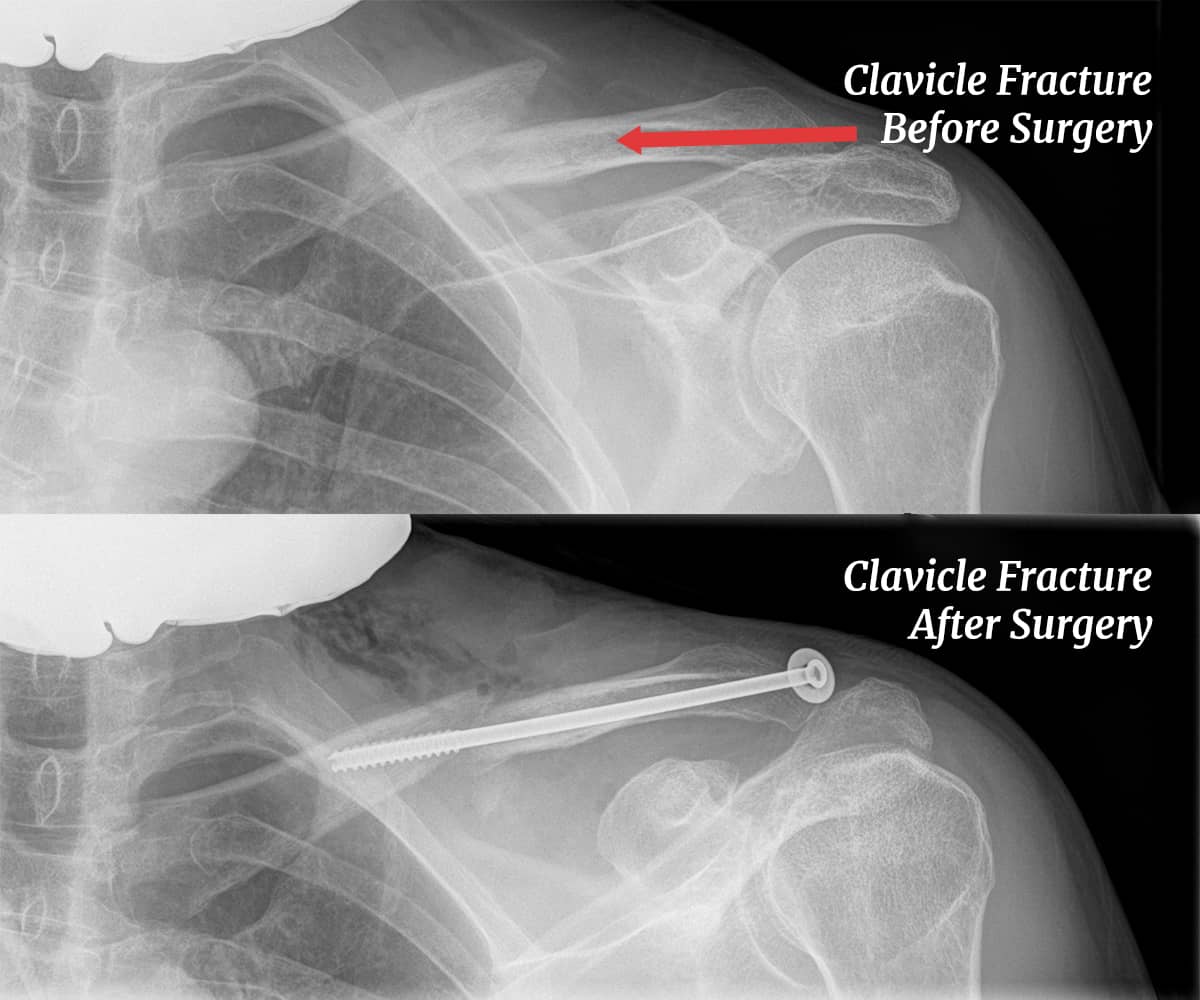Clavicle Fractures Revisited
Each year, one in a thousand people break their clavicle. The treatments have been debated endlessly. Here is our take.

The clavicle is a key strut that stabilizes the shoulder. When stretched out to full length, the muscles attached all around the neck and shoulder function in a biomechanically optimized fashion. A broken clavicle overlaps on itself, shortening the distance from the sternum (the central bone of the ribcage) to the shoulder and weakening the entire upper extremity. For this reason, finding ways to get the clavicle to heal at its full length has been the priority—especially for overhead athletes.
The data on healing with and without surgery has evolved, as have the techniques for clavicle surgical repair. Most recent studies show that clavicle fractures in people under 18 years old almost always heal and remodel to essentially a normal length on their own, without surgery.1
Adult clavicle fractures are divided by anatomy and by displacement of the bone ends. Midshaft fractures, when not displaced, are usually left alone. If the ends of the bones overlap by more than a couple of centimeters or are angled more than 40 degrees, they are usually referred to us for repair. The ones that fall in the middle, or affect people who don’t really care about their upper extremity appearance or strength, are also left alone.
Fractures that are not midshaft, but close to the AC joint—where the shoulder blade and clavicle meet—present a different set of issues. In order to have a stable shoulder, a specialized plate is often required.
The techniques for midshaft clavicle repair are plate fixation with screws in most cases and intramedullary screw placement in a few. We are in the intramedullary camp, and here is why: Plate fixation requires a horizontal incision, which is not cosmetically pleasing and risks damaging a sensory nerve that, when cut, leaves a numb patch on the chest. The plates are prominent and often require a second surgery for removal.
Intramedullary pin fixation is done through a small vertical incision, lines up the clavicle with end-to-end compression, and is easy to remove through a small posterior incision. But since the clavicle is a twisted bone with a small central cavity, this procedure has unique risks. Additional fractures at the time of fixation and nonunion can occur.
Most athletic patients and all overhead-throwing athletes feel better with a repaired clavicle. The debate about which ones require surgery and which will heal on their own is still in flux, with happy and unhappy patients in both camps. Fortunately, we don’t walk on our shoulders—and satisfaction with the outcome is usually only a matter of time.
1 Orthop J Sports Med. 2022 May; 10(5 suppl2): 2325967121S00494. Published online 2022 May 13. doi: 10.1177/2325967121S00494

